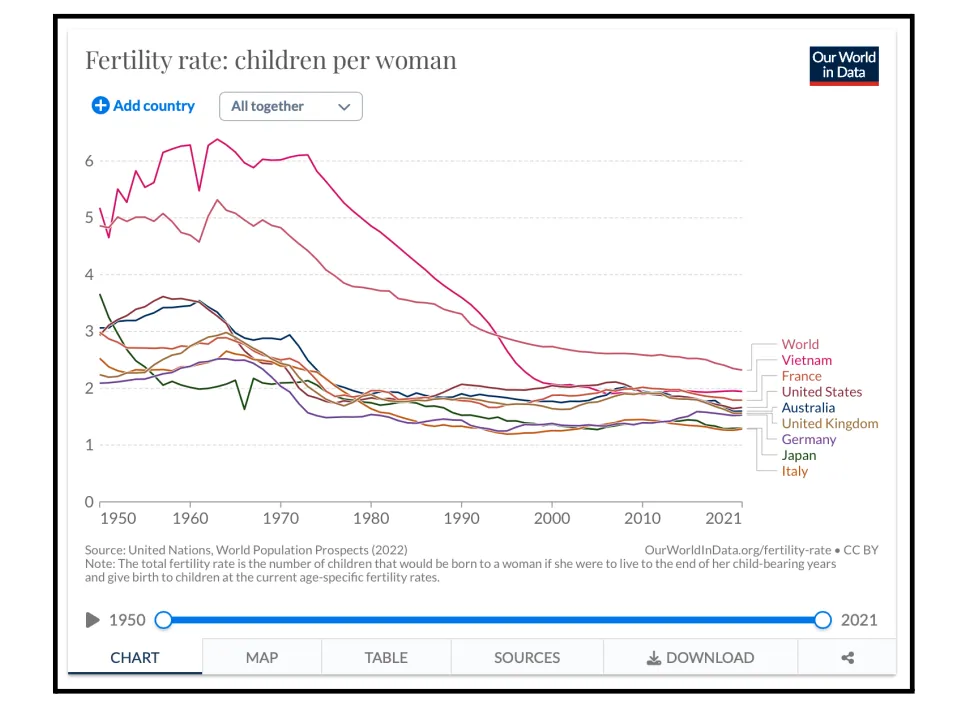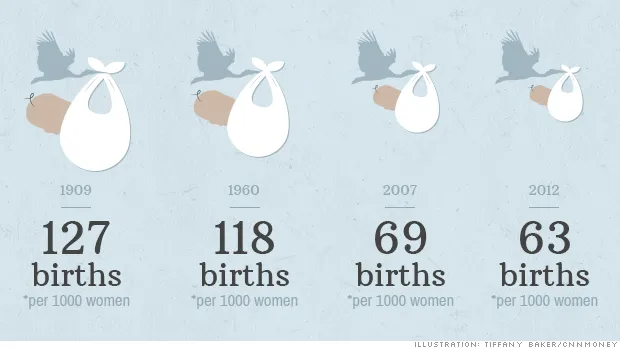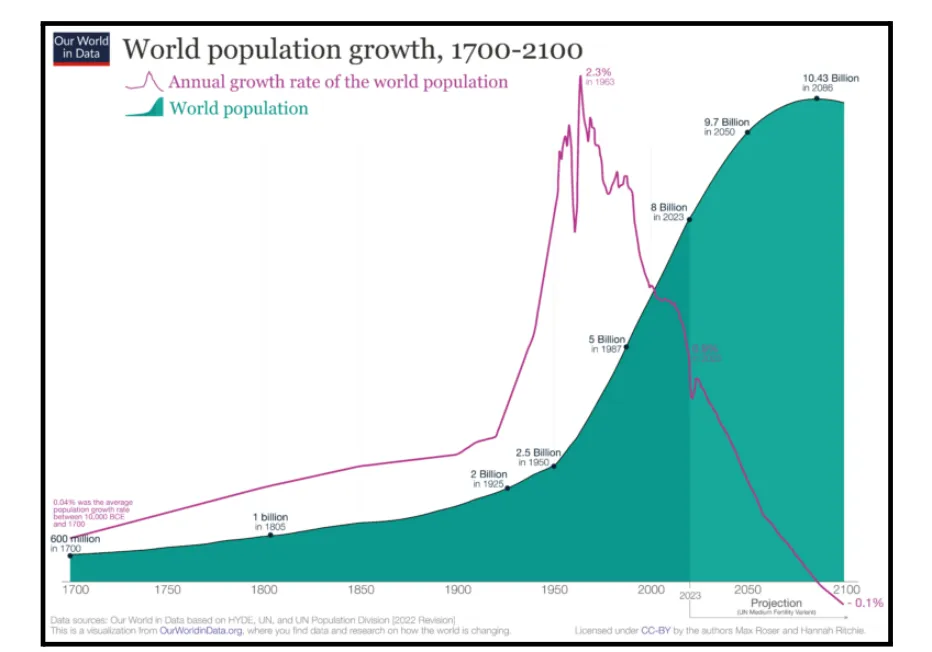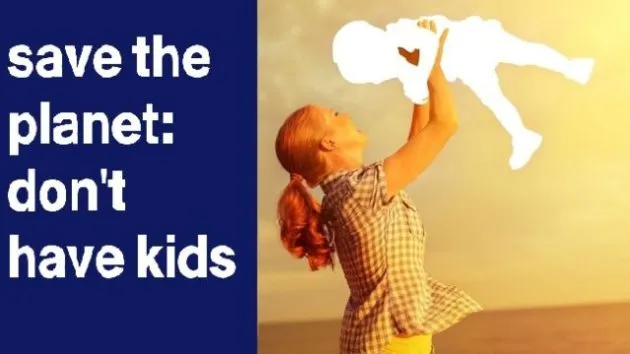By the 1960’s, the industrialized west was unmistakably trending not just from a “decrease in population increase,” but toward outright depopulation.
Across the planet birth rates have dropped below death rates. In particular an explosion in people no longing having children is driving population collapse. History teaches us that societies who go down this path rarely reverse this catastrophic tendency.
Birthgap
Film maker Stephen Shaw’s latest documentary, Birthgap, interviews experts in this field seeking answers as to why the world has shifted into demographic decline. Many of those experts weren’t able to provide definitive answers.
As a data analyst, Shaw studied the numbers himself, and found that beginning in the early 1970s, an explosion of childlessness had set a widespread depopulation trend in motion. For instance, one in twenty women in Japan in 1974 were childless. Moreover, Shaw found that this ratio had increased to one in four by 1977. By 1990 it had risen to one in three, a figure that was still true in 2020.
In Italy, another country known for its severe demographic decline, one in thirty women were childless in Italy in 1974. According to Shaw, the rate of childlessness also skyrocketed there by 1977, reaching one in five women, and went up to one in three by 1990.
In a recent survey in the UK 37% of respondents said they would rather have a pet than be a parent, which rose to 70% for the 11-26 age group.

Millennials are choosing pets over babies
Birth Control
Writing for Lifesitenews.com, Emily Mangiaracina opines that Shaw underestimates the effects of modern use of birth control. By not addressing fertility statistics prior to 1970, Shaw ignores falling fertility rates in some regions that had already started in the 1960s, shortly after the birth control pill was introduced. This includes the U.S., the U.K., and Australia.

Source UN
Social, economic and technological factors have all played a part. However, economic and social upheavals going back further than modern use of birth control have also set the stage.
Generational Change
History shows us that economic and social calamities account for marked periods of birthrate decline. But they also have correlated with longer trends, which indicate lasting generational impacts.
Take France, a culturally commanding country in the 19th century up until the start of WWI.

Portrait of a large family from Lyon late 19th century
French women having fewer children had a cultural influence beyond its borders. In the case of France, the period of the French Revolution and Napoleonic Wars created conditions which may well have affected the subsequent “French fashion” of sophisticated, decadent culture which spurned the bourgeois value of having large families.
The Industrial Revolution, with its urbanization of populations and agricultural advances, has had complicated effects with regard to human population.
It’s widely acknowledged that advances in agricultural fertilisers and farming techniques, allowed an overall explosion in world population in the 20th century. That explosion was most pronounced in third world regions, which benefited from the food exports of developing and developed powerhouses like the U.S. and Europe.
Meanwhile, the move of populations to urban centres and factory work and white collar jobs, brought with it changes in family sizes. The manual labour of children on family farms had no comparable corollary in urban environments, where children were more likely to be regulated via child labour and education requirements, from the late 1800s on.
In the UK with the introduction of the old age pensions the reliance on children to support you into old age lessened. Additionally, falling mortality rates in both childbirth and infant mortality led to decreased family sizes.
Other social changes, such as increased opportunities for entertainment, social and cultural activities, and so on contributed to this change. Birth rates in industrialized western nations dropped even as they produced goods and services in abundance for themselves, and for export to the world.
By the 1960’s, the industrialized west was unmistakably trending not just from a “decrease in population increase,” but toward outright depopulation.
Forecasts
Despite the fact that the UN forecasts an overall world population increase over the next 50 years, it also predicts that by the end of the century, the effects of a rapidly accelerating depopulation will overtake the world:
One of the big lessons from the demographic history of countries is that periods of rapid population growth are temporary. For many countries, the demographic transition has already ended, and as the global fertility rate has now halved we know that the world as a whole is approaching the end of rapid population growth.
The above graph clearly shows the marked flux in annual growth rate dating from the 1960s, that has become a precipitous free fall from 1990 onward. The UN, for example, has predicted Russia’s population will halve by 2100 .
According to Census Bureau data , (May 2020) the median U.S. population has trended significantly older since 2000, with the proportion of people 65 and older increasing by more than a third between 2010 and 2020, while that of children under the age of 5 decreased. Fewer children were born from 2010 to 2020, compared to the previous 10 years. Meanwhile, the populous Baby Boom generation are now squarely in their elderly years.
What this spells is fewer young people contributing to future jobs and productivity, greater strains on Social Security and social welfare systems, and higher medical costs related to the ailments that correlate with ageing, including diabetes, heart disease, hypertension and dementia.
However, it’s not just one country or region facing these prospects. Europe and Asia are well advanced, but even Africa is poised to suffer from the same problem in the coming decades. All in all 2100 will not likely resemble the world as it is today.



